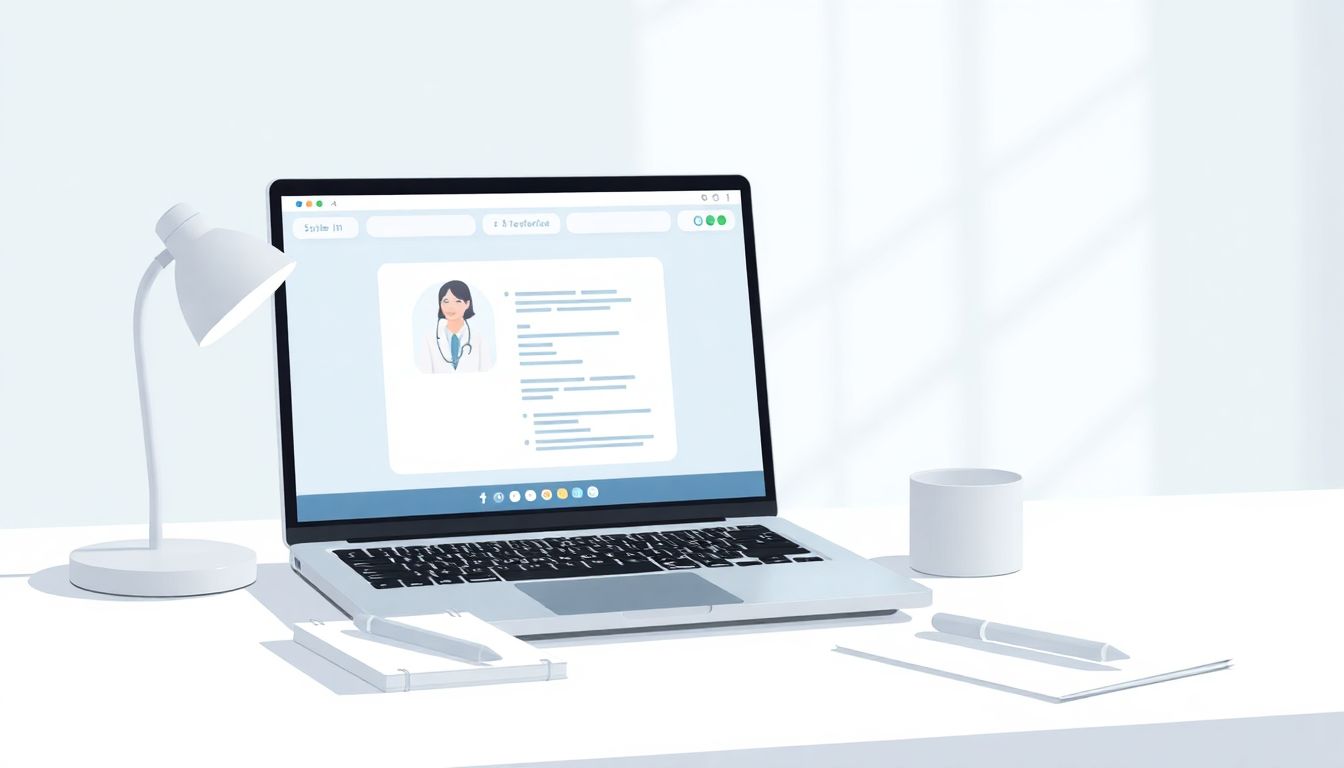Are you struggling to design effective telemedicine services that truly meet patient needs? You’re not alone! Many healthcare professionals face challenges in creating user-friendly, efficient telehealth solutions that enhance both patient experiences and workflow efficiency.
But don’t worry—if you stick around, we’ll explore some creative ChatGPT prompts that can help you craft telemedicine services that are not just functional but also engaging. You’ll discover how to weave key features into your designs and make telehealth more accessible.
From enhancing patient interactions to streamlining processes, we’ve got a treasure trove of topic prompts that can give your telemedicine services a much-needed boost. Let’s dive in!
Key Takeaways
- Designing telemedicine services requires creativity and understanding of patient needs.
- Use specific prompts to generate ideas for features, accessibility, and patient engagement.
- Include essential features like video conferencing, scheduling, health record access, and security.
- Feedback collection and personalized experiences enhance patient satisfaction.
- Streamline workflows to reduce wait times and improve efficiency.
- Create user-friendly interfaces with accessibility in mind to make virtual visits easier.
- Develop comprehensive FAQs to address common patient concerns about telehealth.
- Engaging patients through interactive and creative methods is vital for their participation.

Best ChatGPT Prompts for Designing Telemedicine Services
Designing effective telemedicine services requires creativity and insight. Using ChatGPT can streamline this process and provide valuable ideas.
Here are some prompts you can use to kickstart your brainstorming:
- “Generate innovative ideas for telemedicine service features that engage patients.”
- “List potential telehealth service types that would benefit specific demographics, like seniors or remote workers.”
- “What are some unique virtual healthcare models that incorporate patient feedback into service design?”
- “Suggest ways to utilize artificial intelligence in creating customized telemedicine solutions.”
These prompts help focus your design efforts on user engagement and market needs while ensuring your telemedicine services stand out.
Key Features to Include in Telemedicine Service Designs
Incorporating essential features into your telemedicine service is critical for ensuring user satisfaction and operational efficiency.
Think about including:
- Video Conferencing: High-quality, secure video calls for real-time consultations.
- Patient Scheduling: An easy-to-use calendar system for booking appointments.
- Health Record Access: A portal for patients to view their medical history and results.
- Security Measures: Implementing strong encryption and privacy policies to protect sensitive information.
Utilize these features to create a seamless experience that encourages patient engagement while maintaining security.
Prompts for Enhancing Patient Experience in Telemedicine
Enhancing the patient experience in telemedicine can significantly impact satisfaction and adherence to treatment plans.
Consider these prompts to gather feedback and improve services:
- “How can we personalize the telehealth journey for each patient?”
- “List strategies for collecting patient feedback effectively after a telemedicine session.”
- “Generate a set of questions that help assess patient satisfaction with our telehealth platform.”
- “What innovative features can be added to offer emotional support during virtual visits?”
These prompts will help you tailor services to meet patient needs and improve their overall experience.
Ideas for Streamlining Telemedicine Workflows Using ChatGPT
Streamlining telemedicine workflows can lead to improved efficiency and reduced wait times for patients.
Here are some prompts to optimize your operations:
- “What are the common bottlenecks in telemedicine workflows, and how can we address them?”
- “Suggest tools and technologies that enhance the efficiency of telehealth service delivery.”
- “How can AI be used to automate routine tasks in telemedicine operations?”
- “Outline a streamlined process for patient onboarding in our telehealth platform.”
Implementing these ideas will help you create more efficient workflows, ultimately benefiting both staff and patients.

Prompts for User-Friendly Telemedicine Interfaces
Creating a user-friendly telemedicine interface is essential for ensuring that patients can easily navigate the platform.
Here are some actionable prompts to guide your design:
- “Generate a list of best practices for developing an intuitive telemedicine interface.”
- “What are key accessibility features that need to be included in telemedicine platforms?”
- “Suggest design elements that will enhance user navigation in a virtual healthcare setup.”
- “How can we gather user feedback on interface usability during the testing phase?”
Focusing on these prompts will help create a positive user experience, making virtual consultations more accessible and straightforward.
ChatGPT Prompts for Improving Telehealth Accessibility
Accessibility in telehealth is critical to ensure that all patients can benefit from virtual care.
Utilize the following prompts to brainstorm and implement strategies for enhanced accessibility:
- “List ways to adapt telemedicine services for patients with disabilities.”
- “How can we modify our telehealth platform to assist non-English speaking patients?”
- “What features can be added to make telemedicine more accessible for the elderly?”
- “Generate ideas for outreach programs to educate underserved communities about telehealth.”
These prompts will help you identify gaps in your service and ensure that your telemedicine offerings are inclusive for everyone.
Using Prompts to Create Comprehensive Telemedicine FAQs
Creating a FAQ section is an excellent way to address common patient queries about telemedicine services.
Here’s a list of prompts that can help you compile a comprehensive FAQ:
- “What are the most frequently asked questions patients have about telehealth?”
- “List common technical issues users may face and how to resolve them.”
- “How should we explain the process of a telemedicine appointment in simple terms?”
- “Generate a list of resources for patients seeking further information on telehealth services.”
With these prompts, you can build a valuable resource that guides patients and enhances their understanding of the services available to them.
Creative Prompts for Engaging Patients in Telemedicine
Engaging patients is crucial for maintaining their interest and participation in telemedicine services.
Here are some prompts to stimulate creative ideas for patient engagement:
- “What innovative methods can we use to encourage patients to participate actively during virtual visits?”
- “Generate ideas for interactive content that can educate patients about their health via telemedicine.”
- “List strategies for using humor and relatable content to connect with patients online.”
- “How can gamification be implemented in telehealth to make the process more enjoyable for patients?”
Using these prompts will help you craft engaging and interactive telemedicine experiences, leading to better patient satisfaction and outcomes.

Feedback and Evaluation Prompts for Telemedicine Services
Gathering feedback and evaluating your telemedicine services is essential for continuous improvement.
Start by using these prompts to generate actionable insights:
- “Create a patient satisfaction survey that assesses the effectiveness of our telehealth services.”
- “What questions should we ask to evaluate user experience in our telemedicine platform?”
- “List potential rating systems for patients to evaluate their telehealth consultations.”
- “Suggest methods for conducting follow-up interviews with patients after telemedicine appointments.”
These prompts will help ensure you’re receiving meaningful feedback, enabling you to make informed changes to your services.
By consistently evaluating telemedicine services using these prompts, you can foster an environment of improvement and satisfaction within your practice.
FAQs
Key features should include secure video conferencing, appointment scheduling, patient record management, billing integration, and user-friendly interfaces to enhance both provider and patient experiences.
Enhancing patient experience can involve streamlined onboarding, clear communication, accessible support, user-friendly interfaces, timely feedback, and personalized interactions throughout the telemedicine process.
Prompts that focus on language translation, mobile device compatibility, easy navigation, and variety in communication methods can significantly improve telehealth accessibility for diverse patient populations.
Utilize surveys, post-appointment interviews, and automated feedback prompts within the telemedicine platform to gather constructive feedback that can inform service improvements.
